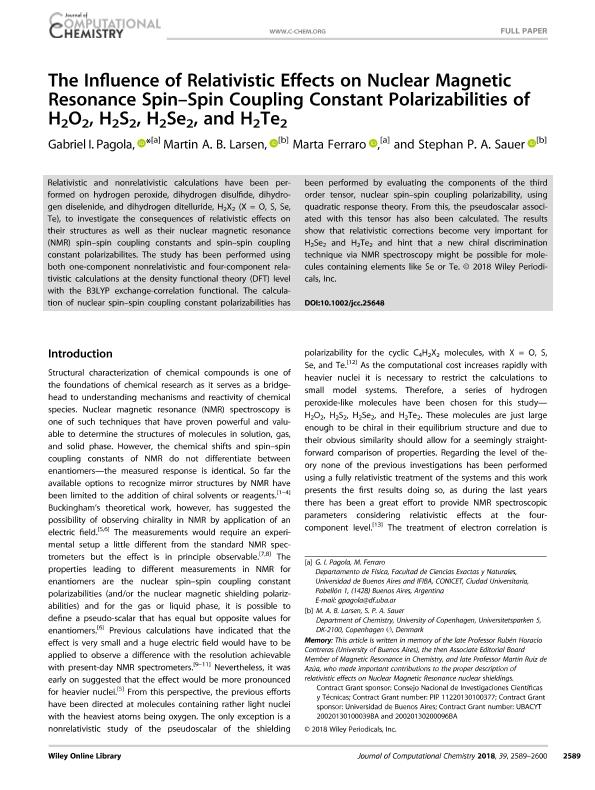Artículo
The influence of relativistic effects on nuclear magnetic resonance spin–spin coupling constant polarizabilities of H2O2, H2S2, H2Se2, and H2Te2
Fecha de publicación:
12/2018
Editorial:
John Wiley & Sons Inc
Revista:
Journal of Computational Chemistry
ISSN:
0192-8651
Idioma:
Inglés
Tipo de recurso:
Artículo publicado
Clasificación temática:
Resumen
Relativistic and nonrelativistic calculations have been performed on hydrogen peroxide, dihydrogen disulfide, dihydrogen diselenide, and dihydrogen ditelluride, H2X2 (X = O, S, Se, Te), to investigate the consequences of relativistic effects on their structures as well as their nuclear magnetic resonance (NMR) spin–spin coupling constants and spin–spin coupling constant polarizabilites. The study has been performed using both one-component nonrelativistic and four-component relativistic calculations at the density functional theory (DFT) level with the B3LYP exchange-correlation functional. The calculation of nuclear spin–spin coupling constant polarizabilities has been performed by evaluating the components of the third order tensor, nuclear spin–spin coupling polarizability, using quadratic response theory. From this, the pseudoscalar associated with this tensor has also been calculated. The results show that relativistic corrections become very important for H2Se2 and H2Te2 and hint that a new chiral discrimination technique via NMR spectroscopy might be possible for molecules containing elements like Se or Te.
Archivos asociados
Licencia
Identificadores
Colecciones
Articulos(IFIBA)
Articulos de INST.DE FISICA DE BUENOS AIRES
Articulos de INST.DE FISICA DE BUENOS AIRES
Citación
Pagola, Gabriel Ignacio; Larsen, Martin Alex Bjørn; Ferraro, Marta Beatriz; Sauer, Stephan P. A.; The influence of relativistic effects on nuclear magnetic resonance spin–spin coupling constant polarizabilities of H2O2, H2S2, H2Se2, and H2Te2; John Wiley & Sons Inc; Journal of Computational Chemistry; 39; 31; 12-2018; 2589-2600
Compartir
Altmétricas




